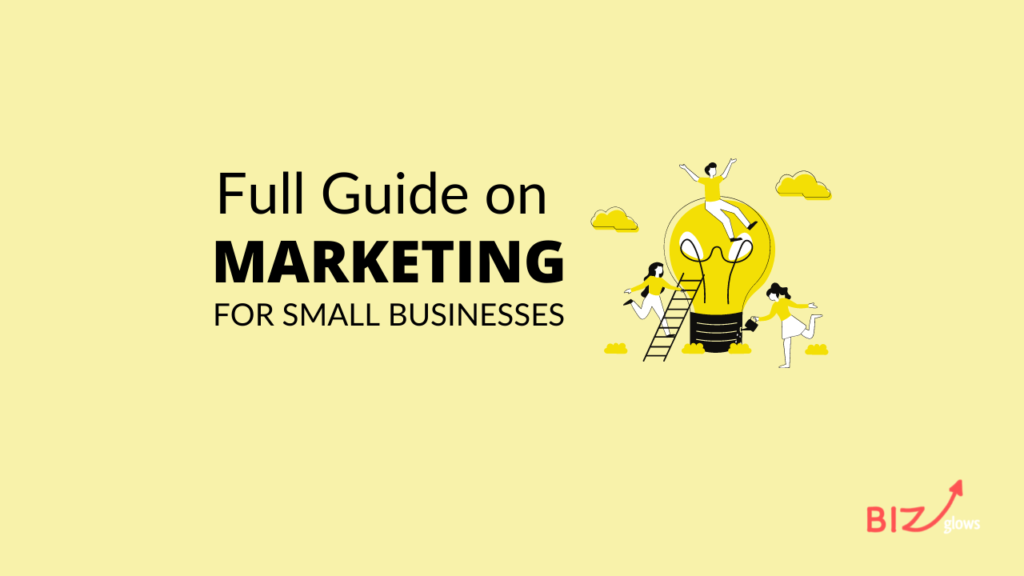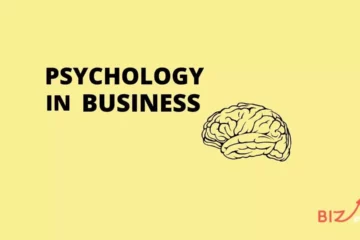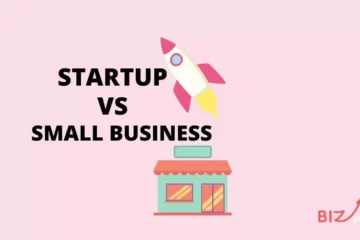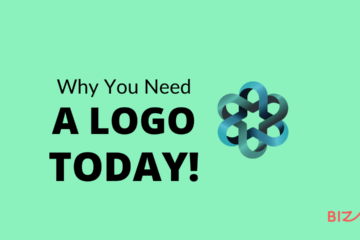Marketing is one of the critical factors that decide the success or failure of a small business or startup to a larger extent. This process should be given great care, understanding its value and importance. Let’s know even more in this detailed article of Biz Glows.
What is marketing?
Marketing is a process through which good products reach the rightful and the most needed user. It is here to bridge the gap between the need and the production of needed goods or services. It involves several activities, in another language, to promote the image or sales of a company, event, person, and so on.
There is a different division in a business organization for the whole work related to marketing and its processes. Their whole responsibility is to oversee the full chain starting from creating communications to the end goal of delivering value or offerings. It means much more than just advertising, promotion, revenue or so! It is a full value chain!
What does Marketing do?
There are different advantages that it does for an organization but some notable ones are listed just below.
- Create brand awareness: This is one of the most underrated works that is done by the complete process of marketing. This creates a base and a beginning for loyalty, trust, and sales, even!
- Brings Traffic: It is a common notion and a famous saying in the world of sales is “What is seen is what is sold”; the marketing methods do the thing of showing the brand to your target customer and thereafter generating the revenue for your organization.
- Generate Revenue: The increase in revenue is the elixir an organization can get after getting sufficient traffic and brand awareness. Now the focus should be surely on marketing with this direct connection with the increase in revenue.
- Building Trust: Showing continuously your brand, delivering value or services with great efficiency brings trust and loyalty factor for your company inside the mind of your customer. Marketing can help a lot in that!
- Gives Opportunity: It gives you and your brand the opportunity to be exposed to new opportunities and also gives you the opportunity to share your vision with everyone!
Marketing Strategies:
This whole arena is very vast and big! There are different sorts of marketing strategies that you can go with. The strategy can be tried and tested or a totally new innovative strategy. Here below, we are discussing, in brief, the different strategies that can boost the overall impact and image of your business!
Steps Before Deciding A Strategy
Before finalizing a marketing strategy for your business, keep the following steps in your mind:
- Define the target population of your business: It defines the whole demographic and cultural fit of your custom. Forming an analyzed image of your customer helps!
- Test your audience: A hypothetical project imagining the persona of your customer to understand them better!
- Consider a strategy: After the pilot, you can decide the proper culture, attitude, psychology, etc of your customer which can help a lot in finalizing the final marketing strategy to choose!
- Re-evaluate the chosen strategy: A second thought on your chosen strategy can help in finalizing the best marketing strategy fit for your particular business.
This can be told to be composed of 4 different types or say it can consist of these 4 constituents:
- Offline and traditional.
- Digital and online.
- Face-to-face. (one to one)
- Cross-category. (Involving other categories in one)
Different Types of Marketing Strategy:
- Paid Advertising: This method is the easiest one because someone or some platform is sharing their existing viewership to your brand. therefore, this involves a lot of money too if you want to do it big. This can either be offline or online and include running social media ads, google ads, etc, and traditional methods like paid TV advertising, hoardings, and banners, pamphlets, posters, etc.
- Cause: This strategyinvolves the services or product of your organization to some linked social causes like sustainability, female empowerment, hunger, etc
- Relationship: This strategy involves the method that hooks your customer for the longest possible time because retaining an existing customer is quitting cheaper than acquiring a new customer. This strategy involves giving discounts to an existing customer, creating a loyalty program, etc
- Undercover Secret: This strategy just behaves as undercover as its name suggests. It involves some stealth techniques, This leaves the customer unaware of the fact that they have been marketed even. It involves some unconscious attack on psychology with precise use of color, music, etc, and product positing and all.
- Word of Mouth: This is the most effective strategy that can ever be developed. This is the most powerful marketing strategy as it involves free marketing with a level of trust too in its spread! It totally depends on what impression you leave on your visitors. Its chances can be increased by delivering the best possible value which increases the probability of the word of your brand being spread fast!
- Web Marketing: This is a separate strategy segment that involves the process of putting your content on the internet in form of images, articles, video, etc, and waiting for its organic reach and growth. Besides, this may include promoting the same content on social media and another platform which can again be covered under the paid advertising strategy.
- Transactional Marketing: This method reduces the difficulty while having sales for the business. Various organizations have used these methods to smoothen the sales journey of the customer. It involves the use of discount coupons, exclusive deals, event or concert coupons, etc, which overall increases the probability of a customer buying a product.
- Diversity Marketing: This method focus on a specific segment of people based on their culture, beliefs, religion, political inclination, etc. It is about creating a sense of loyalty inside that specifically targeted niche.
Component of marketing: The 4Ps
There are four traditional important components of marketing that collectively decide the result of a campaign. These are vital small factors that combine together to become the full campaign. These days, the concept has greatly evolved to include some other ‘Ps’ as well like people, positioning, packaging, and politics.
- Product: This is an important element of marketing. The product refers to, in marketing, as anything that is being sold. For marketing to reach its highest level, the quality of the product should be top-notch. This can not be compromised, else the failure of a marketing campaign can be encountered!
- Price: The price of the product is a critical factor that influences the buying pattern and behavior of a customer. Having the price at the best possible point while safeguarding your profit margin too is very important for the success of any marketing strategy!
- Place (Distribution): Place refers to the place where the sale of the product is happening or simply put this is the point of sale! Having proper distribution of your product and proper positioning of your product inside a store can also be a critical factor for marketing campaign success. This can not be ignored! A place where footfall is more simply increases the chances of the product to be seen and after that chances of its sale too.
- Promotion: This is the element of marketing that you focuses on increasing the outreach efforts of the brand to its customer. The various methods involved in it range from paid advertising, collaborations, contests, discounts, etc!
Marketing Types based on The Involved Entity:
These are some fancy terms and abbreviations but they are quite easy to understand. You can even get an idea of it in one sentence or two.
- B2B (Business to Business): This type is involved when the trade or sale is happening in between to business entity. Examples include big machinery sales, etc.
- B2C (Business to Consumer): This involves the trade or sale where the involved party includes one business entity and the end consumer. Examples include retailers, etc.
- C2C (Consumer To Consumer): This is generally happening between two consumers. This creates a direct connection. Examples can be seen while selling second-hand goods, etc
- C2B (Consumer to Business): In this method, a group of consumers usually create required goods or services in bulk to be supplied to business directly. Examples include the work done by some cooperatives that do white labeling of products, etc.
History of Marketing and Endnote:
The existence of marketing is not new. It is there since the existence of civilization. Although with the change of time and technology there have been many drastic changes in its methods, it has continued to preserve its importance. I am ending here but with a line stating its importance, ”A proper Marketing alone for an instance can take the brand to the never achieved heights and vice versa”
Thank you for reading so far, hope this has helped! Till then happy journey, and meet you in the next article!
What is the difference between marketing and advertising?
The terms marketing and advertising are often confused, but a difference is there for sure! Marketing involves the full chain of advertising, promotion, etc for satisfaction and proving after service to the end-user. Simply put, it is the full process of which advertising is just a small part.




